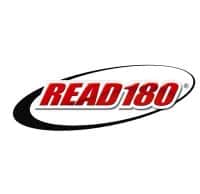Q&A: Hey, We Invented Blended Learning

After I described blended learning at a recent conference, Diana Frezza from Scholastic came up to me and said, “Hey, we invented blended learning with READ 180.” Having seen a lot of READ 180 classrooms over the last 20 years, I knew it was a proven multi-modal reading intervention. But I wasn’t up to date on READ 180 Next Generation so I called Scholastic Education president Margery Mayer.
TVA: Margery, how would you describe READ 180 these days?
MM: READ 180 is a comprehensive reading intervention that combines instruction, assessment and professional development in grades four to 12. It’s particularly effective for students two or more years below grade level. READ 180 leverages adaptive technology to individualize instruction for students and provide powerful data for differentiation to teachers. It’s a tool to help teachers become even more effective, and it gets students back up to grade level and ready for college and career.
TVA: Where did the program originate?
MM: The original author is Dr. Ted Hasselbring, professor at Vanderbilt who’s been working on the use of technology for enhancing learning for over 25 years.
And now READ 180 serves more than one million students.
TVA: What’s new in Next Generation?
MM: We aligned the product with the Common Core and created reading and writing tasks aligned with the direction signaled by the state consortia.
The fully adaptive computer assessment quickly identifies a student’s reading level and periodically marks progress. We added informative dashboards for teachers, leaders and students. The more kids know about where they stand in their learning the more invested they are.
There are multiple assessments in the program and all the keystroke data from student work is captured by the management system. Next Generation really takes the burden off the teacher and makes data actionable.
TVA: How and when do most schools use it?
MM: A 90-minute reading block is split among whole group instruction, small group instruction, instructional software, modeled and independent reading, and whole-group wrap-up.
Reading activities are both print and online with a heavy focus on non-fiction reading.
TVA: What challenges do you see with below-grade level readers?
MM: When kids have experienced long-term reading failure, they have a profound lack of practice. Correcting that requires a very productive use of time. READ 180 frequently regroups kids to ensure they’re in the highest payoff activity with their teachers.
TVA: You mentioned writing. Does READ 180 now incorporate writing?
MM: We added in Read 180 a new zone called the Writing Zone. Like the Common Core, we focus on the ability to make and support an argument. And just like in reading, the Writing Zone helps teachers organize group instruction. Students self score on writing then the teacher scores it.
TVA: Hey, you should check out automated scoring. Dr. Mark Shermis recently reported that online assessment was as accurate as expert graders.
MM: That’s good news because writing is tough to score — keeps teachers from asking for more writing pieces.
TVA: While blends of online and onsite learning seem new, they’ve been around for quite a while. Are you seeing growth in the program and do you think we’ll see more schools adopting similar approaches?
MM: The technology gap in schools is slowly closing, and more of them are equipping students with mobile and transportable devices like laptops and iPads. I think that sets the stage for growth in blended instruction – and that should mean technology that supports and enhances the role that teachers play in learning. Leaders are getting savvier as well, and know that technology applied in the right way can help personalize learning and give teachers tools to do their jobs even better. They’re just looking for the right solutions that they know will work.
TVA: It’s pretty easy to spot a READ 180 classroom on a school visit.
MM: We recommend a classroom designed for engagement—with technology, with text, with their teacher, and with each other.
TVA: What’s new or where is the program headed?
MM: Well, Next Generation took years to develop, but we keep learning. I’m watching online lifestyle communities like Weightwatchers where you make a contract with yourself, get helpful tips and the support of a community. We’re also learning from the casual game space. David Dockterman is our gaming expert. Over the next few years we’ll learn more about motivation and persistence and creating productive blended learning environments. We’re also beginning to incorporate mobile learning technology.
TVA: Like a flipped READ 180?
MM: We’re spending a lot of energy on developing the best way to deploy on mobile devices (tablets, etc). We already have a big library for eReaders—non-fiction articles available on tablets. We want to make the entire Read 180 program available in a flipped classroom format, in any language, accessible anywhere.
We think the social interaction between struggling students and informed teachers is critical to success. Kids need teachers in reading – students need to be asking questions, probing for information. Teachers need to engage students to help them become good readers. We want to keep interaction with students and teachers but want to foster the accessibility of flipped learning.







Tom Vander Ark
Maybe you saw the crazy story that Jay Mathews featured where the Michigan ACLU was blaming READ 180 for low performance. Our friends at KIPP have a different view. After great results with READ 180 in the Bronx, the program will expand to 4 more middle schools and one high school in NYC this fall as well as sites in AK, FL and LA.
Ellen Badger
I love the idea of a flipped Read 180 classroom. I wonder if there are any plans to a follow up with Scholastic and Mayer?